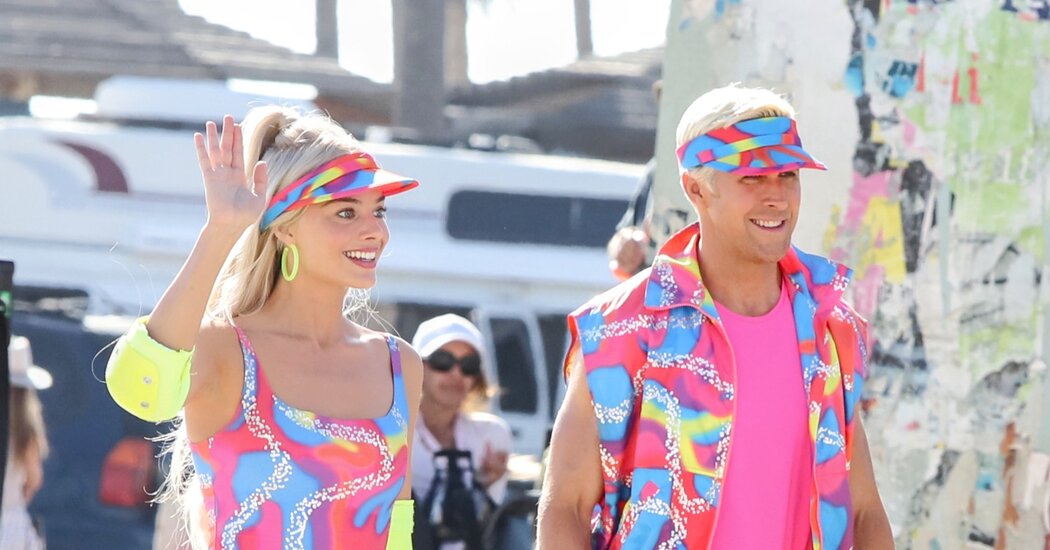
Do you believe neons are to be avoided? I love bright colors, but I’m worried about trending into “wacky” territory as I get older. How do you know when enough is too much? — Susie, San Francisco
Neon, those blindingly bright colors otherwise associated with traffic cones, sports stars and Las Vegas lights, has been making something of a comeback of late. That’s thanks, in part, to Greta Gerwig’s “Barbie,” complete with Margot Robbie’s neon rollerblading turn, as well as the endless specter of the 1980s and ’90s, when aerobics gave way to acid rock. Type “neon” into Tagwalk, the fashion search engine, and you’ll get 132 looks from the spring men’s and women’s wear shows alone.
Among the designers who embraced the ultrabrights for spring were Gucci, where the new designer, Sabato De Sarno, offered fluoro tailored coats with a bit of beaded fringe; the Attico, with its bright-pink ostrich feather chubby; and Tod’s, which showed an assortment of neon-yellow shirt dressing. All of which would suggest that neon is not simply a thing for the young, the ironic or the triathletes trying to up their visibility.
And yet, wearing neon, which includes that family of colors also known as “hot,” “electric” and “acid,” can seem as if you’re turning into the human equivalent of a highlighter pen.
After all, there is no neon color that appears in nature. Neon itself is not even an official part of the color wheel, since it is chemically created. It is, in fact, a relatively recent invention. The first neon light did not appear until 1910; the first neon paint was created by the Switzer brothers, Robert and Joseph, in the 1930s; and the first Day-Glo fabrics began to appear around 1950. Ever since, neon has often gotten a bad rap, associated with artificiality, vulgarity and Vegas-level kitsch.
Yet its patently synthetic, techno edge is also the reason that Andy Warhol called neon “one of the great modern things,” and that so many artists, including Bruce Nauman, Tracey Emin and Glenn Ligon, have embraced it. The American Chemical Society even declared the discovery of Day-Glo fluorescent pigment a National Historic Chemical Landmark in 2012.
Which means there’s a lot to neon besides simply shade — or a lot of shade that can be thrown at the shade — and making it part of your wardrobe takes care and consideration. If you wear it, it’s not like anyone can miss it. You have to be ready for what comes back.






